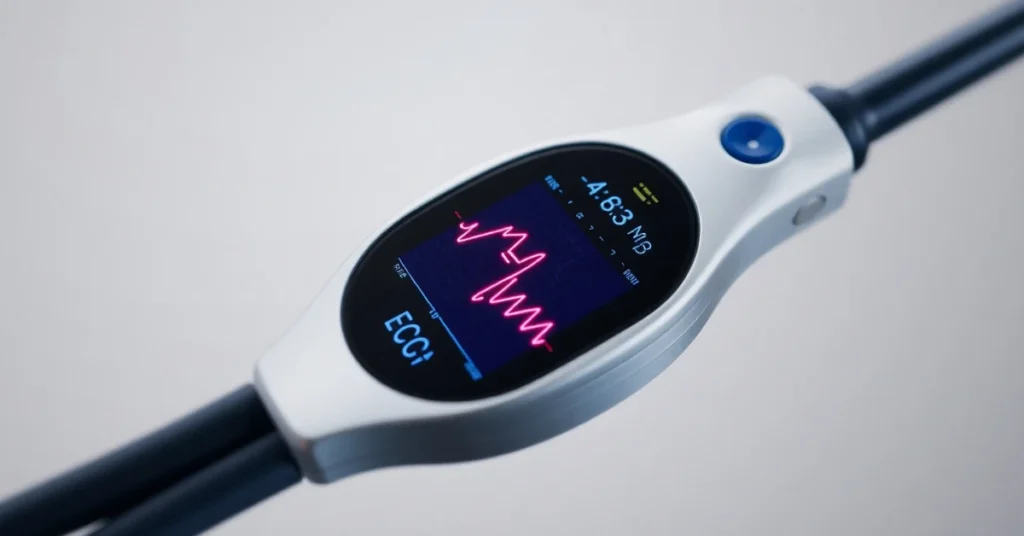Table of Contents
Scientist Create AI Enhanced Stethoscope: Medical professionals have successfully created an artificial intelligence-powered stethoscope capable of identifying three cardiac conditions within a 15-second timeframe.
First introduced in 1816, the conventional stethoscope – utilized for listening to internal body sounds – has remained an essential component of every physician’s medical equipment for over two hundred years.

From Classic Stethoscope to AI Innovation: A 200-Year Leap in Cardiac Care
A research team has now engineered an advanced technological enhancement featuring AI functionality that can identify heart failure, cardiac valve disorders, and irregular heart rhythms nearly instantaneously.
This innovative stethoscope, created by scientists at Imperial College London and Imperial College Healthcare NHS Trust, can examine minute variations in heartbeat patterns and circulation that remain imperceptible to human hearing, while simultaneously conducting a rapid ECG measurement.
Information about this medical advancement, which has the potential to improve early identification of these three conditions, was shared with thousands of physicians at the European Society of Cardiology annual congress in Madrid, recognized as the world’s most significant cardiac conference.

Clinical Trials Show Dramatic Improvement in Early Diagnosis
Research testing the AI stethoscope included approximately 12,000 patients from 200 general practice clinics across the UK, focusing on individuals experiencing symptoms like shortness of breath or exhaustion.
Patients evaluated with this new device showed double the likelihood of receiving a heart failure diagnosis compared to similar patients examined without the technology.
Individuals were three times more prone to receive an atrial fibrillation diagnosis – an irregular cardiac rhythm that may elevate stroke risk. They demonstrated nearly double the probability of being diagnosed with cardiac valve disease, a condition where one or multiple heart valves function improperly.
Potential Risks and Transformative Impact on Global Healthcare
This advancement does present certain risks, including increased likelihood of incorrectly informing people they may have one of these conditions when they do not. The researchers emphasized that the AI stethoscope should be utilized for patients displaying symptoms of suspected cardiac problems, rather than for routine examinations of healthy individuals.
However, it could potentially preserve lives and reduce costs through much earlier diagnosis.

Frequently Asked Questions (FAQs) About Scientist Create AI Enhanced Stethoscope
What makes the AI-enhanced stethoscope different from a traditional stethoscope?
The AI stethoscope goes beyond sound detection—it analyzes heartbeat patterns, circulation, and simultaneously performs an ECG, enabling rapid identification of critical heart conditions. Scientist Create AI Enhanced Stethoscope
Which heart conditions can the AI stethoscope detect within 15 seconds?
It can identify heart failure, cardiac valve disorders, and irregular heart rhythms (such as atrial fibrillation) almost instantly, improving chances of early diagnosis. Scientist Create AI Enhanced Stethoscope
Who developed the AI-powered stethoscope?
The device was created by scientists at Imperial College London and Imperial College Healthcare NHS Trust and presented at the European Society of Cardiology congress. Scientist Create AI Enhanced Stethoscope
How effective was the AI stethoscope in clinical trials?
In tests with 12,000 patients across 200 UK clinics, the device doubled the chances of diagnosing heart failure and significantly improved detection of atrial fibrillation and valve disease. Scientist Create AI Enhanced Stethoscope
Are there any risks associated with using the AI stethoscope?
Yes, researchers noted it may sometimes give false positive results, so it’s recommended only for patients with symptoms of suspected heart conditions, not for routine screenings of healthy individuals. Scientist Create AI Enhanced Stethoscope
